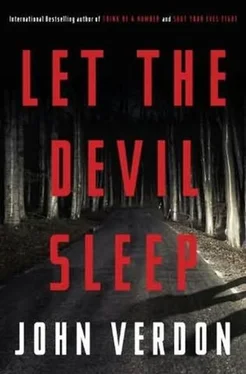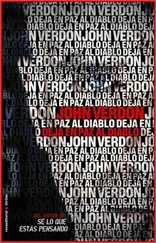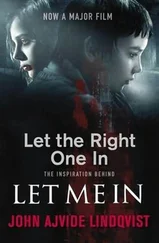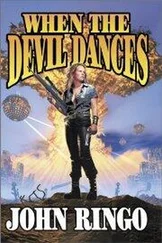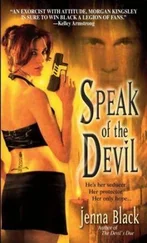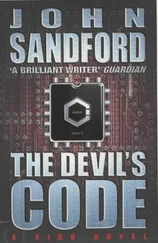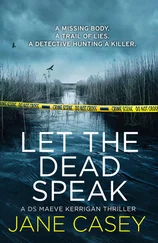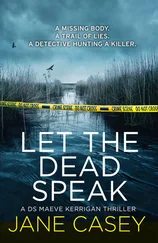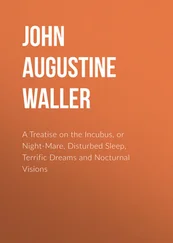“A brand-new case that just happens to be ten years old.”
She studied her spoon. “If you’re starting back at square one, I guess the most basic question would be, why do people murder other people?”
“Apart from sacred-mission delusions, the main motives are sex, money, power, and revenge.”
“Which do you think it is?”
“Given the range of victims, it’s hard to imagine it being sex.”
“I bet it’s about money,” said Madeleine. “A lot of money.”
“Why?”
She gave a little shrug. “Luxury cars, expensive guns, rich victims-just seems like that’s what it’s all about.”
“But not about hating it? Hating the power of money? Or eliminating greed?”
“Oh, gosh, no. Probably just the opposite.”
Gurney smiled. He had the feeling that Madeleine might be onto something.
“Finish your chowder,” she said. “You don’t want to miss the first episode of The Orphans of Murder .”
They didn’t have a television, but they did have a computer, and RAM News, in addition to putting the program on its cable channels, had advertised a simultaneous webcast.
As they sat in front of the iMac in the den, Gurney navigated through the RAM website. He was always appalled by new evidence of how trashy the media world had become. And it kept getting worse. Moronic sensationalism was like a ratchet that turned in only one direction. And RAM’s toxic programming was leading the descent into the pit.
A home page consisting mainly of a huge red, white, and blue logo-“RAM NEWS NETWORK: THE WORLD WITHOUT THE SPIN”-was followed by a page that featured their most popular offerings. He scrolled quickly through the listings in his search for Orphans .
SECRETS AND LIES: What the Mainstream Media Won’t Tell You
SECOND OPINION: Questioning Conventional Wisdom
APOCALYPSE NOW: The Battle for America’s Soul
Gurney pressed on grimly to the next page of the website, where, at the top of a list of news specials, he found The Orphans of Murder . Under the title was a short promotional teaser: “What happens to the survivors when a killer tears out the heart of a family? Shocking true stories of grief and rage. Premier Episode Tonight at 7:00 P.M. EDT.”
Ten minutes later, at 7:00 P.M. precisely, the first episode began. The screen was almost completely dark. The eerie cry of an owl suggested that the viewer was looking at a country road at night. A man walked out of the darkness into a narrow area of illumination cast by the headlights of a car parked on the grassy shoulder. The bone structure of the man’s face in the angled headlights created the sharp shadows of a face in a thriller film.
He started to speak in a slow, portentous voice. “Exactly ten years ago, in the spring of the year 2000, in the rural hills of upstate New York, on a lonely road like this one, on a moonless night, with the chill of winter still in the air, the horror began. Bruno and Carmella Mellani were returning to their country home from a christening party in the city, perhaps discussing the happy events of the day, the dear friends and relatives they hadn’t seen for so long, when another car came rapidly up behind them, then began to pass them on a long, dark curve. But when that strange, speeding car came abreast of Bruno and Carmella Mellani…”
The scene on the screen changed to the dimly lit interior of a moving vehicle at night, a driver and a passenger in the front seat, unrecognizable in the darkness. They were speaking, laughing softly. A few seconds later, the headlights of a vehicle behind them were visible. The approaching headlights grew brighter, moving to the left side of their car, suggesting that the pursuing vehicle was about to pass. Then there was a sudden flash of white light on the screen, with the simultaneous explosive sound effect of a gunshot, followed by the tire screech of a vehicle out of control, prolonged metallic crashing sounds, and the shattering of glass.
The narrator returned to the screen. He bent over and picked up a piece of twisted debris from the ground, brandishing it as though it were a significant piece of evidence from the crime he was describing. “The Mellani car flew off the road. It was so badly mangled that the first responders had trouble identifying the make and model. A third of Bruno Mellani’s head was blown away by the impact of a bullet from a huge handgun. Carmella Mellani’s injuries put her into a coma that she remains in to this day.”
Staring at the computer screen, Madeleine screwed up her face in disgust. She seemed to be finding the RAM approach more disturbing than the event it was depicting.
The narrator went on to give super-dramatic descriptions of the five other Good Shepherd shootings, culminating in a long description of the Harold Blum fiasco that led to the unraveling of Max Clinter’s career and life.
“God,” said Madeleine, “this stuff is way over the top.”
Gurney nodded.
The camera zoomed in to a medium shot of the narrator-turned-host, sitting in an interview environment with two men. “Ten years,” he said. “Ten years, and yet to some of us it seems so recent. You may be asking, why revisit that horror now? The answer is simple: because a ten-year anniversary is a natural stopping point, a point at which we often find it appropriate to pause and look back on triumphs and tragedies alike.”
The host addressed a dark-complected man in one of the chairs across from him. “Dr. Mirkilee, your specialty is forensic psycholinguistics. Could you explain that term to our audience?”
“Of course. It’s finding the thinking in the words.” His voice was small, quick, precise, very Indian. A subtitle appeared on the bottom of the screen: DR. SAMMARKAN MIRKILEE, PH.D.
“The thinking?”
“The person, the emotion, the background. The way the mind works.”
“So you’re an expert at the way words, grammar, style all come together to reveal the inner man?”
“This is true, yes.”
“All right, Dr. Mirkilee, I’m going to read you some excerpts from a document sent by the Good Shepherd to the media ten years ago, and I’m going to ask you for your insights into the author’s mind. Ready?”
“Of course.”
As the host read a long screed about the way to “eradicate greed” and “exterminate human carriers,” thereby freeing the earth of “this ultimate contagion,” Gurney recognized the words as the introduction to the Good Shepherd’s Memorandum of Intent-otherwise known as the “manifesto.”
The host put the paper down on the table. “Okay, Dr. Mirkilee-what kind of individual are we dealing with here?”
“In layman terms? Very logical, yet very emotional.”
“Expand on that. Please.”
“Many tensions in the writing, many styles, attitudes.”
“Are you saying he has multiple personalities?”
“No, that is a silly thing-no such disorder. It is for stories, movies.”
“Ah. But I thought you said-”
“There are many tones . First one, then another, another. Very unstable man.”
“And I take it you would characterize such a man as dangerous?”
“Yes, of course. He killed six people, no?”
“Good point. One last question. Do you think he’s still out there, lurking in the shadows?”
Dr. Mirkilee hesitated. “Well, I’ll say this: If he is out there, I would make a large bet that he is watching this program right now. Watching and considering.”
“Considering?” The host paused, as if grappling with the significance of that statement. “Well, that’s a chilling thought. A murderer walking our streets. A murderer who at this very moment may be considering what to do next .”
Читать дальше
